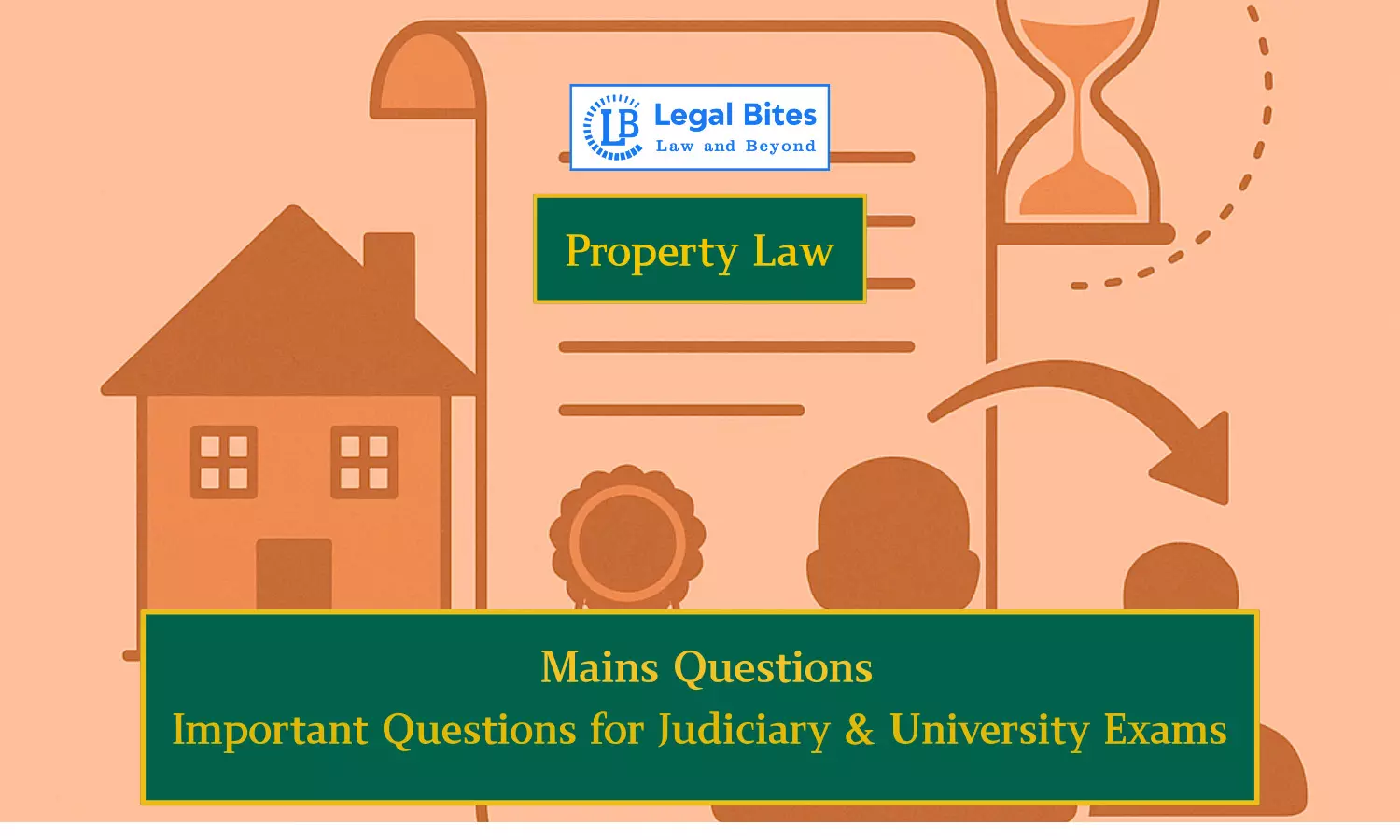Explain the "Rule against Perpetuity" with the help of illustrations and leading cases.
Find the answer to the mains question of Property Law only on Legal Bites.

Question: Explain the "Rule against Perpetuity" with the help of illustrations and leading cases. [OJS 2018]Find the answer to the mains question of Property Law only on Legal Bites. [Explain the "Rule against Perpetuity" with the help of illustrations and leading cases.]AnswerThe Rule Against Perpetuity, as laid down in Section 14 of the Transfer of Property Act, 1882, prevents the creation of future property interests that vest too remotely in time. It states that no transfer can create...
Question: Explain the "Rule against Perpetuity" with the help of illustrations and leading cases. [OJS 2018]
Find the answer to the mains question of Property Law only on Legal Bites. [Explain the "Rule against Perpetuity" with the help of illustrations and leading cases.]
Answer
The Rule Against Perpetuity, as laid down in Section 14 of the Transfer of Property Act, 1882, prevents the creation of future property interests that vest too remotely in time. It states that no transfer can create an interest that takes effect after the lifetime of one or more persons living at the date of the transfer, plus the minority (i.e., under 18 years) of a person who must be in existence at the expiration of that period.
The main objective of the rule is to ensure free and unrestricted transfer of property. It avoids situations where property is tied up for generations and helps maintain economic mobility and legal certainty.
For example, if A transfers property to B for life, and then to B’s eldest son on attaining 25 years of age, the transfer is invalid as it postpones vesting beyond the legal limit. However, a transfer to a child in existence, subject to attaining majority (18 years), is valid.
There are notable exceptions: the rule does not apply to vested interests, charitable transfers under Section 18, leases, or transfers governed by Muslim personal law.
Leading cases like Tagore v. Tagore (1872) and Whitby v. Mitchell (1890) have established that future interests must not vest beyond lives in being plus the minority of an existing person. In Ram Newaz v. Nankoo (1913), the Allahabad High Court invalidated a gift made to a person not in existence at the time of transfer.
The Rule Against Perpetuity serves an important public function by limiting the duration of control over property and ensuring that interests are not created for distant, uncertain futures. It promotes legal clarity and economic activity by preserving the alienability of property and preventing indefinite restrictions on its use.

Mayank Shekhar
Mayank is an alumnus of the prestigious Faculty of Law, Delhi University. Under his leadership, Legal Bites has been researching and developing resources through blogging, educational resources, competitions, and seminars.
